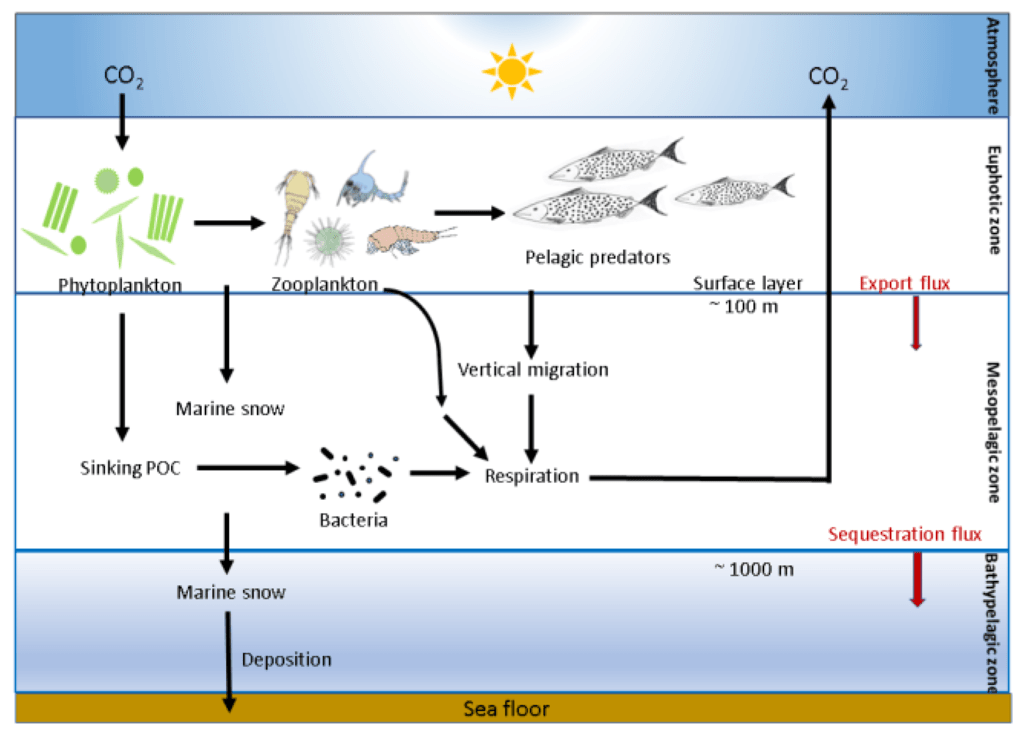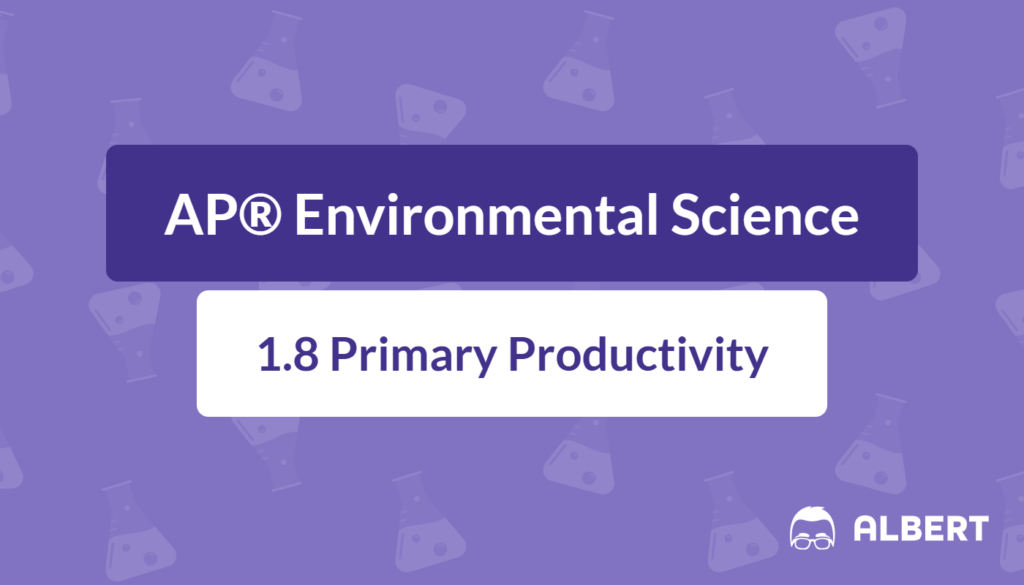What We Review
Introduction
Primary productivity lies at the heart of ecological studies in AP® Environmental Science. It refers to the rate at which producers—such as plants, algae, and some bacteria—convert solar energy into chemical energy through photosynthesis. This concept is critical because it affects how energy enters food webs and supports all life in an ecosystem. Understanding primary productivity gives insight into how ecosystems function, how much energy is available to consumers, and how environmental changes might impact biodiversity.
Throughout this article, key distinctions between gross primary productivity (GPP) and net primary productivity (NPP) will be explained. Additionally, the role of solar energy, key steps of photosynthesis, and methods of measuring primary productivity will be covered. Examples will clarify every major concept, ensuring a clear understanding of how primary productivity operates in both terrestrial and aquatic ecosystems.
What is Primary Productivity?
Primary productivity is usually expressed as the rate at which solar energy is transformed into organic compounds via photosynthesis over a specific period. In simpler terms, it shows how much energy producers can harness from sunlight and store as biomass. This stored energy then becomes the fuel for herbivores, carnivores, and other consumers in the food chain.
Producers allocate some of the chemical energy they create for their growth and reproduction, while the rest is used for maintaining metabolic processes. Therefore, every ecosystem’s energy foundation depends heavily on the productivity of its producers.
Gross vs. Net Primary Productivity
When discussing primary productivity, it helps to separate it into two distinct measurements:
- \text{Gross Primary Productivity (GPP)}: The total rate of photosynthesis in a particular area.
- \text{Net Primary Productivity (NPP)}: The energy that remains after subtracting the energy lost to respiration (R) from GPP. Mathematically,\text{NPP = GPP - R}.
Gross primary productivity captures all the energy produced, while net primary productivity represents the energy that becomes available to organisms higher up the food chain, such as herbivores.
Example: Calculating Productivity in a Small Forest
Imagine a one‑hectare forest patch that generates 20,000 kilocalories of energy per year (\text{GPP}) through photosynthesis. Out of this total, 5,000 kilocalories are used by the plants themselves for respiration (\text{R}). Therefore, to find \text{NPP}:
\text{NPP} = 20{,}000 , \text{kcal} - 5{,}000 , \text{kcal} = 15{,}000 , \text{kcal}This means 15,000 kilocalories are available for primary consumers like herbivores, insects, and other organisms that rely on the plants for food and energy.
The Role of Solar Energy in Primary Productivity
Solar energy drives the process of photosynthesis. Because sunlight serves as the initial energy source, ecosystems with ample sunlight often display higher rates of primary productivity. Forests with dense canopies capture solar radiation through leaves, while phytoplankton in sunlit surface waters (often referred to as the photic zone) remain close to the water’s surface for optimal light exposure.
Additionally, solar energy is not distributed evenly across the globe. Therefore, ecosystems near the equator usually have higher productivity thanks to more consistent and intense sunlight. However, even in sunny locations, factors like nutrient availability can limit the actual amounts of productivity producers can achieve.
Example: Comparing a Forest and a Coral Reef
- Terrestrial forest: Abundant sunlight and fertile soil lead to robust growth, thus high productivity.
- Coral reef: Although underwater, it can still be highly productive when located in clear, shallow waters where sunlight penetrates easily. Corals and algae gain sufficient light to support rapid photosynthesis.
In a coral reef with less than ideal water clarity, less sunlight might reach the symbiotic algae living in coral tissues. As a result, the reef’s GPP could be lower overall.
Photosynthesis: The Key Process
Photosynthesis is the chemical process that converts solar energy into chemical energy stored as glucose. It can be summarized with this equation:
6 , \text{CO}_2 + 6 , \text{H}_2\text{O} \xrightarrow{\text{sunlight}} \text{C}6\text{H}{12}\text{O}_6 + 6 , \text{O}_2Producers such as plants, algae, and certain bacteria take in carbon dioxide (\text{CO}_2) and water (\text{H}_2\text{O}) while capturing solar energy through pigments like chlorophyll. As a result, glucose (\text{C}6\text{H}{12}\text{O}_6) is synthesized, and oxygen (\text{O}_2) is released as a byproduct.
Therefore, photosynthesis not only supplies energy to the producers but also supports life by releasing oxygen into the atmosphere. This oxygen is essential for the cellular respiration that occurs in plants, animals, and many microorganisms.
Example: Daily Photosynthetic Activity in a Plant
- Morning: As the sun rises, a plant’s leaves absorb light.
- Midday: The plant’s chloroplasts use the absorbed light to begin converting \text{CO}_2 and \text{H}_2\text{O} into glucose, storing energy in chemical bonds.
- Evening: With decreasing light, photosynthesis slows. The plant continues to respire, using some of the stored energy, while the rest is left for growth and reproduction.
Gross vs. Net Primary Productivity
Gross primary productivity (\text{GPP}) is the entire amount of energy converted from sunlight into organic compounds. Net primary productivity (\text{NPP}) is the energy that remains after plants use part of the total energy for respiration (\text{R}). These two metrics each highlight different aspects of ecosystem functioning.
For instance, comparing GPP between two forests indicates which one can channel more solar energy into biomass overall. By also measuring NPP, researchers learn how much of that energy remains for herbivores, thus shaping the entire food web. Both figures are vital for determining how healthy or productive an ecosystem is and how it might recover from disturbances like deforestation.
Example: Visualizing Plant Energy Flow
Throughout a growing season in a temperate forest, a tree captures a certain amount of energy (GPP). Part of this energy is used to maintain the tree (respiration). The rest (NPP) is built into leaves, branches, and trunk tissue, all of which eventually support organisms that consume the tree’s biomass. This flow of energy illustrates how producers are the foundation of ecosystem energy dynamics.
The Importance of Measuring Productivity
Measuring primary productivity assures ecologists and environmental scientists that they have a stable reference for ecosystem performance. Tracking changes in productivity over time also allows for detecting early signs of environmental stress. For instance, a sudden decline in an aquatic ecosystem’s productivity might point to pollution or reduced sunlight due to algal blooms blocking light penetration.
Moreover, knowing a system’s productivity helps predict how many herbivores and predators it can support. If net primary productivity decreases, the consequences can ripple through the ecosystem, affecting organisms at multiple trophic levels. Therefore, conservation efforts often factor in productivity measurements when they aim to preserve biological diversity and promote sustainable resource use.
Example: Food Chain Impacts
- High productivity: Herbivores, like deer or small fish, can thrive and reproduce quickly. Predator populations may also increase due to a stable prey base.
- Low productivity: Fewer resources exist for herbivores, which then reduces food availability for predators. This can lead to population declines across many species.
Factors Affecting Primary Productivity
Several elements influence how effectively producers capture solar energy. Light availability, nutrient concentrations, and temperature are among the most critical factors that alter both GPP and NPP.
- Light availability: Dense canopies, murky water, or short daylight hours can limit the amount of photosynthesis that occurs.
- Nutrient levels: Producers require essential nutrients (e.g., nitrogen, phosphorus). When nutrients are insufficient, productivity decreases.
- Temperature: Extreme cold slows metabolic reactions, while excessive heat may stress plants, reducing photosynthetic rates.
Example: Seasonal Changes in a Temperate Forest
Early spring in temperate forests often shows increasing NPP because melting snow and rising temperatures enhance nutrient release into the soil. More sunlight during longer days boosts photosynthesis, causing a spike in growth. However, productivity can drop later in the year if droughts or shorter days limit the energy or water available to producers.
Adaptations in Aquatic Ecosystems
Light availability can be challenging in aquatic systems. Most red light gets absorbed within the upper meter of water, while blue light penetrates deeper, up to approximately 100 meters in very clear water. Producers like phytoplankton, algae, and seaweed have developed adaptations to gather available wavelengths efficiently. Many algae contain pigments that capture ranges of light beyond the typical spectrum that land plants use.
For instance, red algae in deeper waters can absorb the blue-green wavelengths that travel further underwater. Meanwhile, phytoplankton migrate within the photic zone to optimize their access to sunlight. These adaptations ensure that aquatic photosynthesizers can maintain adequate GPP, even in environments where sunlight is much weaker than on land.

Example: Seaweed and Phytoplankton Strategies
- Seaweed: Possesses additional pigments (e.g., phycobiliproteins) that effectively capture low‑intensity light.
- Phytoplankton: Often move vertically in the water column, staying at the depth where sunlight remains strong enough for productive photosynthesis.
Conclusion
Primary productivity is foundational for understanding how energy flows through ecosystems. Gross primary productivity and net primary productivity serve as indicators of an ecosystem’s vigor and health. Solar energy, photosynthesis, and environmental factors like nutrients, temperature, and light availability all combine to shape the productivity of producers, ultimately determining the abundance of life that any region can support.
By measuring productivity, scientists can evaluate ecosystem stability and investigate pressing environmental challenges. In addition, insights gained from studying adaptations in aquatic ecosystems highlight nature’s resourcefulness. Overall, a solid grasp of primary productivity prepares students in AP Environmental Science to appreciate how energy originates with the sun and filters through every level of the food web.
Important Vocabulary
- Primary Productivity: The rate at which solar energy is converted into organic compounds via photosynthesis over a given time.
- Gross Primary Productivity (GPP): The total amount of energy captured through photosynthesis in a specific area.
- Net Primary Productivity (NPP): The energy stored in producer biomass after subtracting energy used for respiration from GPP.
- Photosynthesis: The process by which producers use sunlight, carbon dioxide, and water to create glucose and release oxygen.
- Respiration: The metabolic process where organisms use stored energy for maintenance, often releasing carbon dioxide in the process.
Sharpen Your Skills for AP® Environmental Science
Are you preparing for the AP® Environmental Science test? We’ve got you covered! Try our review articles designed to help you confidently tackle real-world AP® Environmental Science problems. You’ll find everything you need to succeed, from quick tips to detailed strategies. Start exploring now!
- AP® Environmental Science: 1.4 Review
- AP® Environmental Science: 1.5 Review
- AP® Environmental Science: 1.6 Review
- AP® Environmental Science: 1.7 Review
Need help preparing for your AP® Environmental Science exam?
Albert has hundreds of AP® Environmental Science practice questions, free response, and full-length practice tests to try out.








